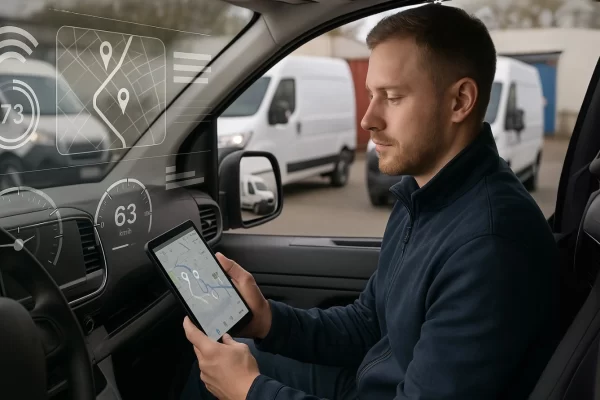
Old habits really can die hard. An unwillingness to change and move with the times however can prove extremely costly for businesses.
For fleet managers, boosting driving performance standards has become recognized as one of the most effective ways of cutting fuel and maintenance costs, managing road risk and reducing motor insurance premiums.
But one of the biggest obstacles to achieving and sustaining these improvements is getting buy-in from drivers who are often resistant to change.
Driver motivation or engagement?
I have watched with concern companies monitoring employee driving styles and adopting both ‘carrot’ and ‘stick’ approaches to management in their efforts to increase performance.
Punishments for poor driving and incentives for improvement can both be said to have achieved a level of success. I firmly believe there’s a third way however – a more fruitful and sustainable approach.
I’ve come to the conclusion it’s engagement, rather than motivation, that really holds the key to employees driving more efficiently and improving their mpg.
A spirit of collaboration
It is suggested motivation achieved by ‘carrot’ or ‘stick’ will only succeed in changing behavior in the short-term. Real employee engagement is needed to bring about long-term change. If employees are not engaged, they will not be kept motivated.
A stick exists for both drivers and managers in the shape of the law to curb speeding and aggressive driving behaviour – however few wise managers believe punishing employees is the best way to get results. Collaboration should be the cornerstone of a company’s culture – rather than a hostile ‘them’ and ‘us’ philosophy.
Empowerment and recognition
This is where fleet management technology can come into its own, putting drivers at the heart of behavior improvement by feeding live performance information back to their sat nav devices, in the form of audible and visual alerts, and enabling them to change their actions in real time.
League tables
Compiling and posting league tables comparing the performance of individual drivers against their peers to spark healthy competition can be beneficial. These tables can be created using a simple scoring system automatically generated by your fleet management software, based upon mpg, speeding incidents, prolonged idling and driving events such as harsh acceleration, braking and erratic steering.
Incentives
Occasional incentives, such as small rewards for drivers with the best mpg, can help but may not always be necessary – simple recognition and acknowledgement of their efforts can be equally effective.
Furthermore, if employees truly understand that everyone prospers from improving fuel efficiency, and this message is communicated consistently, they are much more likely to improve their driving performance.
Sanctuary Maintenance, part of housing and care provider Sanctuary Group, has taken this approach – and has shown how fuel bills can be slashed by 25 per cent by doing so.
Clear communication
To assure clear communication with its drivers, the company’s ?eet managers have traveled with a roadshow to clarify any misunderstandings and to demonstrate the bene?ts of a improved driving style, both to the employees and business .
After all, controlling costs and making bottom line savings protects a company’s financial future, helping ensure job and wage security and a better working environment for all.
Positive feedback
By giving positive driver feedback and constructive criticism, employees will be encouraged to share it with co-workers. If your employees are given negative feedback, they will most likely keep it to themselves. By creating a culture of collaboration and positive reinforcement, the good guys will give their fellow drivers something to shoot for and everyone will work to pull in the same direction.





